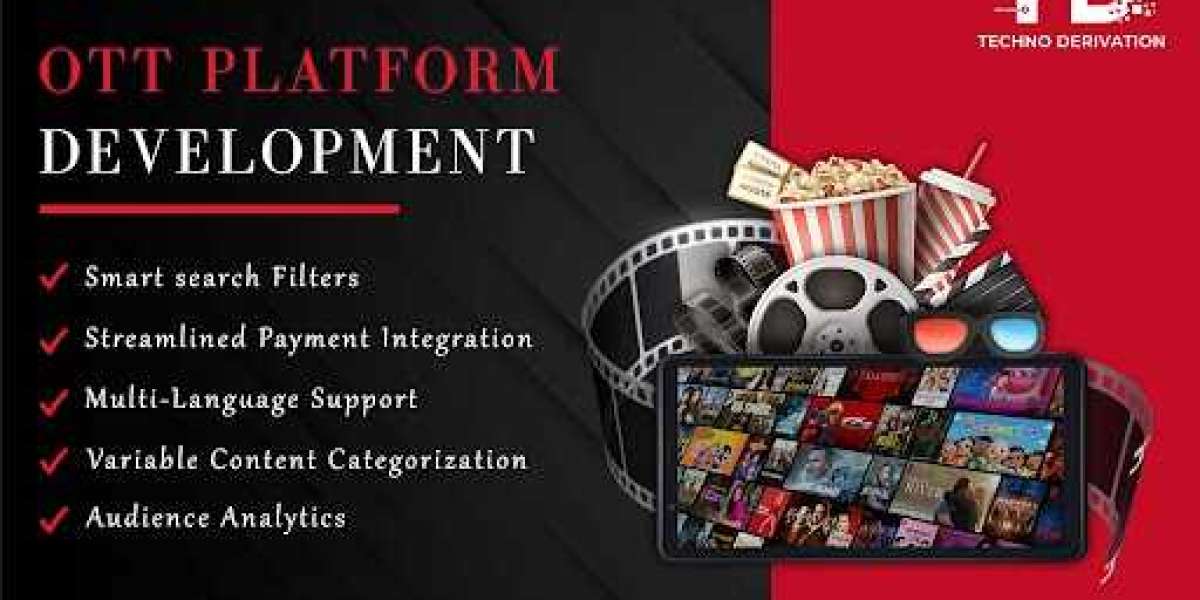Introduction
Over-the-Top (OTT) applications have revolutionized the way content is consumed, providing users with instant access to streaming media over the internet. From entertainment to education, OTT platforms offer a versatile medium for delivering content directly to audiences, bypassing traditional distribution channels. As a brand, developing an OTT application can significantly enhance your reach, engagement, and revenue streams. This article explores the how and why of OTT app development, guiding you through the process and highlighting its immense benefits.
Why Develop an OTT Application?
1. Expanding Your Audience Reach
OTT platforms allow brands to tap into a global audience without the limitations of geographical boundaries. With the increasing penetration of high-speed internet and smart devices, more users are turning to OTT services for their content needs. Developing an OTT app enables your brand to reach a diverse and expansive audience, fostering greater visibility and engagement.
2. Enhanced User Engagement
OTT apps offer personalized and interactive experiences, keeping users engaged for longer periods. Features like content recommendations, user profiles, and interactive elements (such as polls and quizzes) can significantly enhance user interaction. Additionally, push notifications can alert users about new content, promotions, or updates, keeping your brand at the forefront of their minds.
3. Monetization Opportunities
OTT platforms provide various monetization models to generate revenue. These include subscription-based models (SVOD), ad-supported models (AVOD), and transactional models (TVOD). Brands can choose the model that best aligns with their audience and content strategy, creating steady income streams. Moreover, integrating in-app purchases and premium content options can further boost revenue.
4. Data-Driven Insights
One of the significant advantages of OTT apps is the ability to collect and analyze user data. This data provides valuable insights into user behavior, preferences, and engagement patterns. By leveraging these insights, brands can tailor their content and marketing strategies to better meet the needs of their audience, ultimately driving higher satisfaction and retention rates.
How to Develop an OTT Application
1. Define Your Objectives and Audience
Before diving into development, clearly define your objectives and target audience. Understanding your audience's preferences, viewing habits, and pain points will help you design a more effective and user-centric app. Set clear goals for your OTT app, such as increasing brand awareness, driving subscriptions, or expanding your content reach.
2. Choose the Right Platform
Decide on the platforms where you want to launch your OTT app. Popular options include iOS, Android, smart TVs, and web-based platforms. Consider your target audience's device preferences and ensure your app is compatible across multiple platforms for maximum reach.
3. Select the Appropriate Technology Stack
Choosing the right technology stack is crucial for the performance and scalability of your OTT app. Key components include:
- Frontend Development: Use frameworks like React Native or Flutter for cross-platform compatibility.
- Backend Development: Opt for robust backend solutions like Node.js, Django, or Ruby on Rails to handle user authentication, content management, and data storage.
- Content Delivery Network (CDN): Ensure smooth and fast content delivery with CDNs like Amazon CloudFront, Akamai, or Cloudflare.
- Streaming Protocols: Implement efficient streaming protocols such as HLS (HTTP Live Streaming) or DASH (Dynamic Adaptive Streaming over HTTP) for optimal video quality.
4. Design a User-Friendly Interface
A seamless and intuitive user interface (UI) is essential for user retention and satisfaction. Focus on creating a clean, easy-to-navigate design with user-friendly features such as search functionality, content categorization, and personalized recommendations. Consider incorporating accessibility features to make your app inclusive for all users.
5. Integrate Security Features
Security is paramount in OTT app development. Protect user data and content with robust security measures, including encryption, secure login mechanisms, and DRM (Digital Rights Management) to prevent unauthorized access and piracy.
6. Implement Analytics and Feedback Mechanisms
Integrate analytics tools to track user engagement, content performance, and app usage patterns. Tools like Google Analytics, Mixpanel, or Firebase can provide detailed insights into user behavior. Additionally, incorporate feedback mechanisms such as in-app surveys and reviews to gather user opinions and continuously improve your app.
7. Test Thoroughly and Launch
Conduct comprehensive testing to identify and resolve any bugs or issues. Perform usability testing to ensure a smooth user experience across different devices and platforms. Once testing is complete, launch your app on your chosen platforms and promote it through various marketing channels to attract users.
Conclusion
Developing an OTT application for your brand is a strategic move that can significantly enhance your reach, engagement, and revenue. By understanding your audience, choosing the right technology stack, and focusing on user experience, you can create a successful OTT app that meets the needs of modern content consumers. Embrace the power of OTT and position your brand at the forefront of the digital content revolution.








